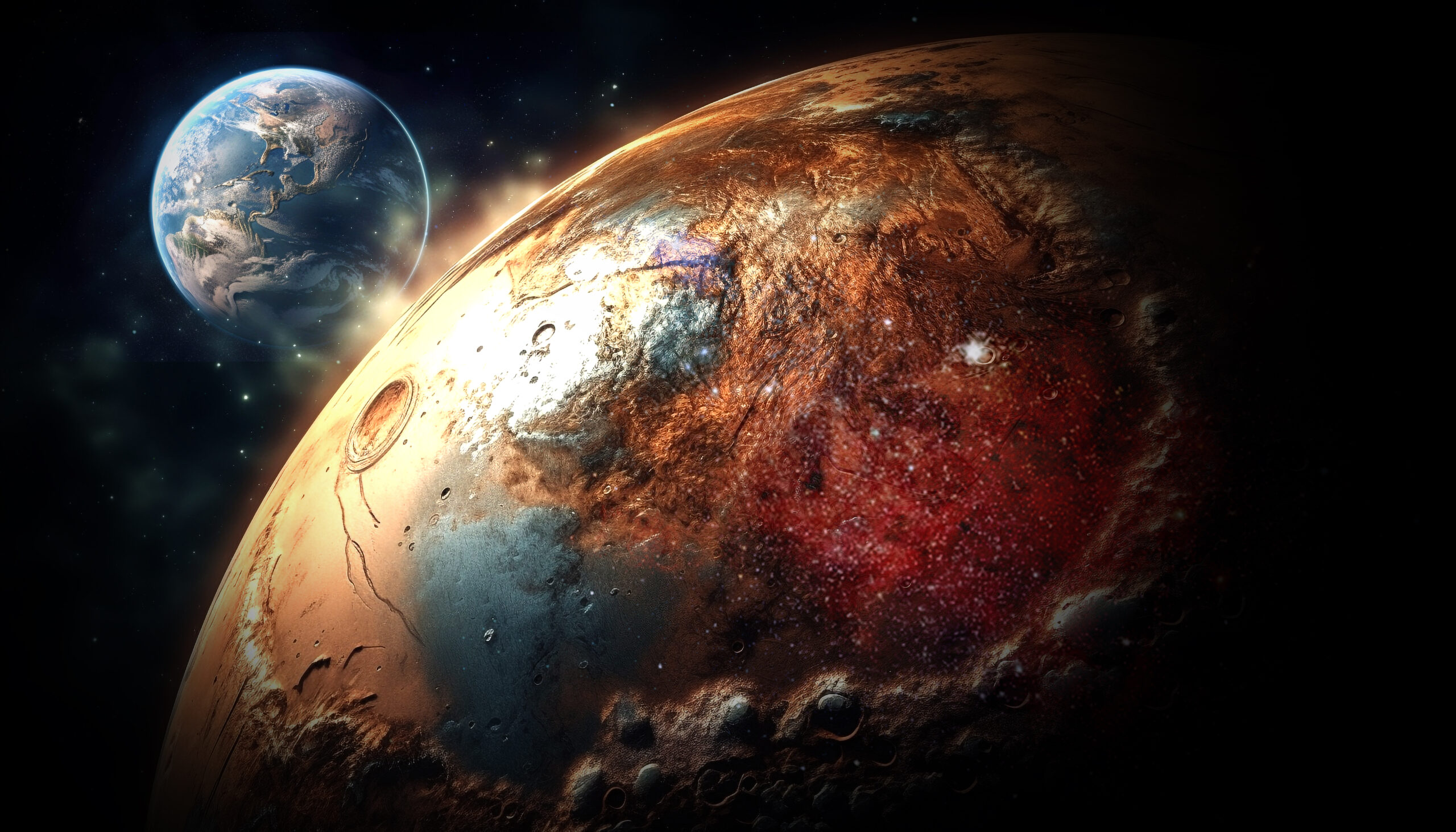Blog Credit: Trupti Thakur
Image Courtesy: Google
Oxygen On Mars- MOXIE
NASA’s MOXIE Successfully Generates Oxygen on
NASA announced the successful completion of its Mars Oxygen In-Situ Resource Utilization Experiment (MOXIE) aboard the Perseverance Mars Rover. MOXIE’s success marks a significant step toward enabling astronauts to “live off the land” on Mars by producing their own oxygen and rocket propellant, supporting long-term exploration and sustainability on the Red Planet.
MOXIE stands for the Mars OXygen ISRU Experiment. ISRU is another acronym, In Situ Resource Utilization, which is a technical way of describing what most of us call “living off the land.”
The word “moxie,” used to describe someone with spunk and audacity, came from the soft drink of the same name. The soft drink, Moxie, was invented in the late 1800s in Lowell, Massachusetts, not far from the M.I.T. Haystack Observatory where the MOXIE principal investigator works. You can still buy Moxie in New England, and it’s considered the official drink of the state of Maine.
The connection with soft drinks doesn’t end there. According to some accounts, the Moxie company was the first in the U.S. to use carbon dioxide (CO2) to make a beverage fizzy. On Mars, MOXIE is the first to use carbon dioxide to make – well, anything at all. Another connection is more technical. Whenever we run MOXIE, we need to be very careful with the settings to make sure we only produce carbon monoxide (CO), and not pure carbon, which would ruin it. That destructive process is called “coking.” The carbon deposit itself is called – coke.
What is MOXIE?
MOXIE, a device roughly the size of a microwave oven, has demonstrated its ability to convert Martian carbon dioxide (CO2) into oxygen. This technology breakthrough could play a crucial role in future human missions to Mars, providing a sustainable source of breathable air and rocket propellant.
Why is the successful operation of MOXIE is considered a significant achievement by NASA?
Answer: MOXIE’s success is significant because it demonstrates the ability to produce oxygen from Mars’ atmosphere, potentially supplying breathable air and rocket propellant for future astronauts, paving the way for sustainable Mars missions.
How does MOXIE produce oxygen on Mars?
MOXIE produces molecular oxygen by separating one oxygen atom from each molecule of carbon dioxide pumped in from Mars’ thin atmosphere. Mars’ atmosphere provides the source of carbon dioxide.
5 Things to Know
Oxygen is Rare on Mars
There is less than 1% of air on Mars as there is on Earth, and carbon dioxide makes up about 96% of it on Mars. Oxygen is only 0.13%, compared to 21% in Earth’s atmosphere. If we want oxygen on Mars, we either have to bring it along, or make it ourselves.Fuel Needs Oxygen to Burn
On Earth, we are always getting energy from the reaction between oxygen and whatever fuel we are using — whether it’s a log in a campfire or gasoline in a car tank. The oxygen weighs several times more than the fuel it burns, which is not an issue on our planet. However, when we have to bring it with us to other locations in space, we need to think a lot about that weight and other factors.MOXIE Makes Oxygen ‘Out of Thin Air’
Fuel needs oxygen to burn—for example, on Earth, oxygen is constantly being converted to carbon dioxide by animals, or fires, or other chemical reactions. Plants and trees use water and sunlight to convert the carbon dioxide back to oxygen, replenishing the air. On Mars, MOXIE also makes oxygen from carbon dioxide, about as much as a modest-sized tree, though using a very different process.MOXIE is a Scale Model for a Future Big MOXIE
To launch from Mars, a small crew of human explorers will need 25 to 30 tons of oxygen, or about the weight of a tractor-trailer! To make that much oxygen would require a 25,000 to 30,000 watt power plant. The Perseverance power system only provides about 100 watts, so MOXIE can only make a small fraction of the oxygen that a future “Big MOXIE” would need to make.MOXIE is a ‘Tech Demo’
NASA uses technical demonstrations, or tech demos, when it’s not enough to just test a critical technology in the laboratory and it needs to be proven on an actual mission.
All About MOXIE
- What Does MOXIE do??
Compared to what we’re used to on Earth, the air on Mars is very thin. In fact, there is less than 1% as much air on the surface of Mars as on Earth, and visiting Mars would be like flying in a balloon 100,00 feet up in the air. And not only is the air thin, but it’s made almost entirely out of carbon dioxide (CO2).
On Earth, we can thank the myriad forms of life for the oxygen in our atmosphere that our body greedily absorbs with every breath we take. All around us, trees and plants are busy scrubbing CO2 out of our atmosphere and turning it into useful oxygen, at the same time taking up water and turning it into the chemicals that the plants need to live. Mars isn’t so fortunate, so if we want oxygen on Mars we’ll have to make it ourselves. That’s what MOXIE does.
- What is ISRU?
The “I” in MOXIE stands for ISRU, or In Situ Resource Utilization. “In Situ” refers to the stuff that’s there – on Mars in this case. Resource Utilization means using that stuff for some productive purpose, usually to make something that we would otherwise have to bring with us. In other words, living off the land (LOL). Maybe LOL would have been a better acronym than ISRU, but that’s already been taken! One example of ISRU might be making bricks out of Martian soil, and using the bricks for buildings. Another example is making oxygen out of the thin Martian air.
- How does MOXIE work?
MOXIE is an example of a “solid oxide electrolyzer cell,” which is a fuel cell that runs in reverse. In a fuel cell, fuel and oxygen react to make energy (electricity) and a stable chemical product. The most common example is the hydrogen fuel cell, used in some automobiles, which combines hydrogen and oxygen to make water and electricity. A hydrogen cell of this type, in contrast, would start with the water and use electricity to turn it back into hydrogen and oxygen. The two devices, the fuel cell and the electrolyzer, are nearly identical devices, operated in a very different way.
Using water to make oxygen on Mars would be a great idea if we had easy access to the water. But to get water, we would have to travel to the far north or south to find ice, or to mine for ice buried deep in the ground. Fortunately, though, another source of oxygen is all around us, in the form of the carbon dioxide that makes up most of the Martian air. So instead of using hydrogen, MOXIE is an example of a solid oxide electrolyzer cell that uses carbon dioxide to make the gasses carbon monoxide and oxygen.
- Why will we need oxygen on Mars?
The first human crew to go to Mars will need a lot of oxygen to breathe, as much as 2 to 3 tons. Our bodies use that oxygen to burn our fuel, which we call “food,” in order to make the energy that keeps us going all day. But it’s not just humans who need oxygen. Nearly everything that uses fuel to make energy uses oxygen to burn that fuel, whether it’s a car, a campfire, or a rocket. And it turns out that the oxygen, which on Earth we get for free from the air, actually weighs a lot more than the fuel itself.
When we send the first crew to Mars, we would need to think about how to bring them home at the end of their visit. And the single biggest user of oxygen in their entire stay on Mars will be the rocket that takes them back to orbit. While the astronauts may breathe 2 to 3 tons of oxygen in their 18-month stay on the planet, the ascent rocket would use 25 to 30 tons.
- How much oxygen does MOXIE make?
MOXIE was designed to make at least 6 grams of oxygen per hour. The maximum it can make is 12 grams per hour, although there isn’t enough CO2 at our high-altitude Jezero crater landing site to make much more than 10. For comparison, you’re probably using about 10 grams per hour while you’re reading this explanation (unless you’re riding your exercise bike while you’re reading)
MOXIE has generated a total of 122 grams of oxygen since its operation on Mars, exceeding NASA’s original goals. At its peak efficiency, it produced 12 grams of oxygen per hour, twice the initial target.
Why so little? It takes a lot of power to pull apart CO2 molecules, and the Perseverance rover only provides about 100 Watts. That’s not much more than the computer you’re using to read this. If we’re to make useful amounts of oxygen in the future, we’ll need a much larger power plant.
Blog By: Trupti Thakur

12
SepMOXIE
Sep 12, 2023Recent Blog
The ITES-QApr 17, 2025
The UPI Circle Of PhonePeApr 16, 2025
Dangerous AI In HealthcareApr 15, 2025
Google’s Iron Wood ChipApr 14, 2025
World’s First 3D Printed Train StationApr 11, 2025




